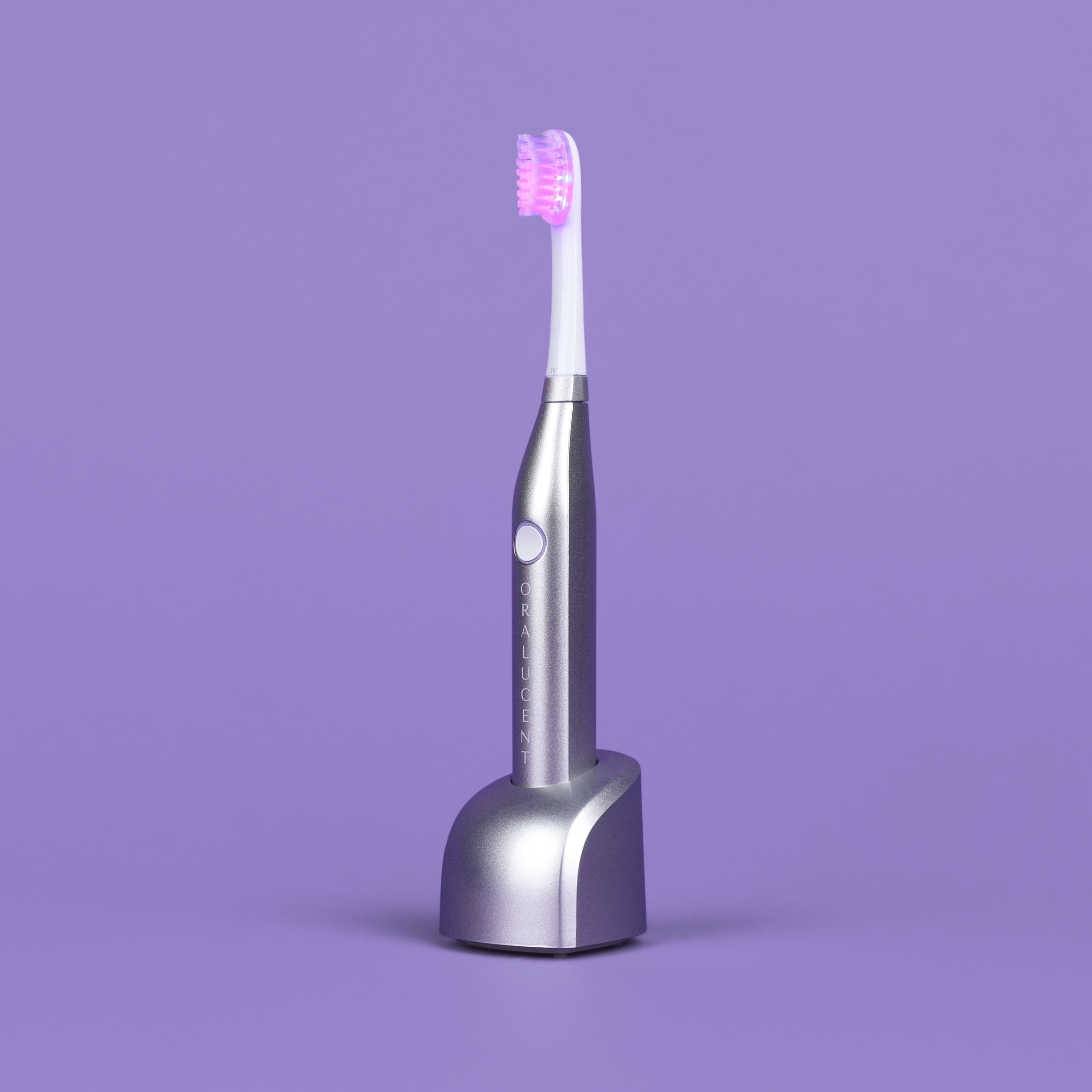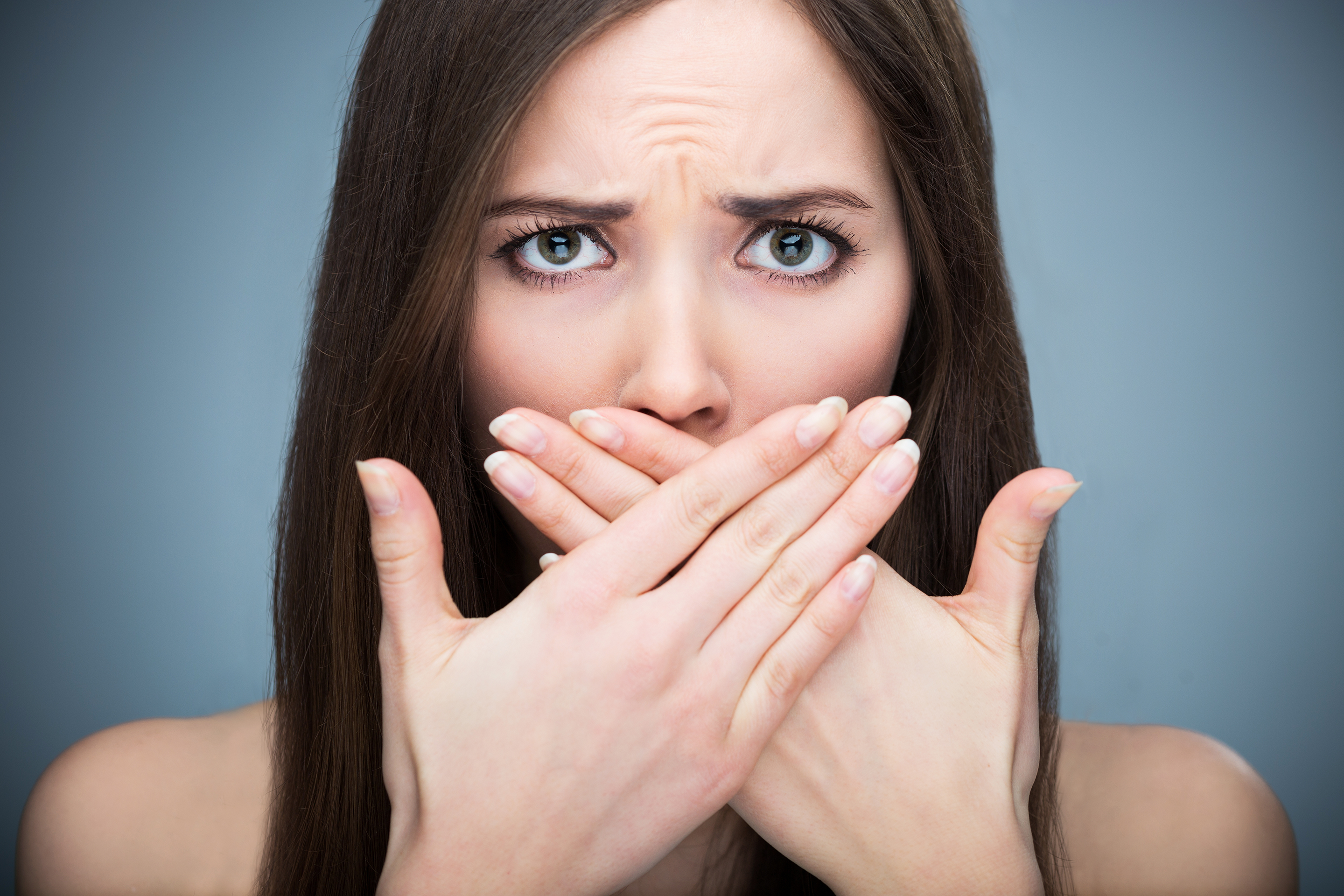Sensitivity is the single biggest problem with teeth whitening. In fact, it’s the most common teeth whitening side effect. This may make you wonder about the safety of teeth bleaching or whitening. But just because people have experienced pain from the whitening process, doesn’t mean the process has damaged their teeth. The FDA has tested and approved the teeth whitening process offered in dental offices to ensure the ingredients are safe.
Let’s look at the best teeth whitening treatments and how best to prevent teeth whitening sensitivity.
What Is Teeth Whitening Sensitivity?
Teeth whitening sensitivity is when the dentin in your teeth becomes hypersensitive. This causes a heightened reaction to hot and cold drinks, certain foods (especially sugary foods), and contact with your teeth, like during brushing. You may not experience teeth sensitivity from whitening; not everyone does. And the level of pain or post-teeth-whitening sensitivity may vary too. The character of your teeth prior to whitening, the strength of the whitening product, and previous whitening procedures can all contribute to the degree of sensitivity you experience.
What Causes Teeth to Become Sensitive During the Whitening Process?
So, what are your teeth whitening options? Well, there are six basic at-home teeth-whitening options as well as one in-office method. The chart below outlines and compares the most common options and what each offers for the cost:
Your teeth, as hard as they may seem, are made of porous material. That is true of the outer enamel layer and the dentin layer that makes up most of the tooth. During the whitening procedure, the bleaching ingredients seep into the pores of the tooth to dislodge and break up the debris that has collected in those pores.
The ingredients in teeth whitening products, usually hydrogen peroxide or carbamide peroxide, can cause tooth sensitivity if those ingredients reach the nerves in your tooth. These products can also make the pores in the dentin layer more receptive to pain signals, further increasing the intensity of any pain.
How to Minimize Sensitivity Before and After Whitening
The good news is that there are ways to minimize the side effects of whitening teeth. If you have experienced teeth sensitivity from whitening in the past or want to prevent it in the future, consider these teeth whitening sensitivity tips:
-
Space out your teeth whitening treatments.
Allowing more time to pass between treatments can help prevent dentin hypersensitivity and is more likely to allow you to whiten your teeth without pain.
-
Try a different teeth whitening product.
Some teeth whitening products are more intense than others. If the teeth whitening treatment you are using is causing you pain or sensitivity, consider switching to a milder treatment method to give your teeth a break before you use that method again.
-
Avoid foods and beverages that increase sensitivity during whitening.
You may love your cup of coffee in the morning, but when you’re whitening your teeth, that hot beverage could cause you some discomfort. Going to the other extreme may cause problems as well. Ice cream and other frozen treats during or shortly after a whitening treatment may be less enjoyable. As a general rule, avoid extremes in temperature and also acidic foods like citrus fruit and juices.
-
Try a lower strength bleaching gel.
Since it’s the peroxide in the gel that is causing your teeth to become sensitive, consider using a lower strength bleaching gel. With a lower concentration, you should experience a lesser degree of sensitivity.
-
Consult with your dental professional.
Your dentist is always your best option for learning about which whitening treatments may be most effective and how to use them to minimize sensitivity.
Am I a Good Candidate for Teeth Whitening?
If you are a regular coffee or tea drinker, enjoy red wine, or have been a smoker, your teeth have probably yellowed. These are considered extrinsic stains. Teeth whitening treatments may give you a brighter smile. To maintain the whiteness achieved for a longer period, you will want to decrease or avoid the habits that have stained your teeth.
If your teeth have gray or yellow-brown stains, these are usually intrinsic stains, which are deeper within the tooth. These types of discoloration are the most difficult to whiten, but it’s still possible. The treatment will just take longer than extrinsic stains.
There are a few other things you should consider before deciding to use teeth whitening strips, whitening gels, whitening trays, or in-office whitening treatments. For instance, it is important to remember that any dental restorations, like crowns, fillings, and veneers, will not be affected by the whitening treatment. Since they were created to match your existing tooth coloring, they may look yellowed or dark compared to your natural teeth surfaces after whitening.
Here are a few more situations in which you might not be a good candidate for teeth whitening:
- You are already experiencing chronic sensitivity with your teeth.
- You currently have periodontal disease.
- You have any kind of oral cancer.
- The enamel on your teeth already has excessive damage.
- You’re pregnant or nursing. You may be a good candidate, but just to be on the safe side, you may want to consider postponing treatments.
Of course, consulting with your dental professional before using any whitening treatment is always recommended.
Which Whitening Treatment Method Has the Lowest Risk of Causing
Since there are several whitening treatments to choose from, let’s compare to see which teeth whitening treatment provides the lowest risk of increasing sensitivity.
-
Whitening toothpastes and rinses
Although whitening toothpastes and rinses have a low rate of sensitivity reported by users, their effectiveness is also much lower than other methods.
-
Teeth whitening strips
The ease of application of whitening strips has made them popular among consumers; however, this whitening treatment can cause sensitivity and irritation. The strips vary in the concentration of the bleaching agent used. The stronger the concentration, the greater the risk of sensitivity. Leaving the whitening strips on longer than recommended or using them too often can also increase the likelihood of teeth whitening sensitivity.
-
Teeth whitening gels
Many users of these gel products have reported teeth whitening sensitivity in their gums. Teeth whitening gum pain usually happens when the gel gets on to gums and under the gumline. You may also experience pain or teeth sensitivity if the gel reaches exposed areas of the tooth root or if the gel product has a higher acidity level.
-
Tray bleaching vs. in-office whitening
A study done in 2012 showed that individuals who used DIY tray bleaching treatments reported almost double the degree of teeth whitening sensitivity pain as those who received in-office whitening by a professional. 71.4% DIY treatment participants reported sensitivity issues during their treatment compared to 38% of those who had professionally applied treatment. However, patients receiving in-office whitening treatments have an increased risk of inflammation and gum tissue damage.
Recently, dental professionals have been adding LED teeth whitening to their in-office whitening treatment. The benefit of using the LED light is that it safely speeds up the chemical process for whitening your teeth. The blue light technology does not increase or decrease the risk of sensitivity, however.
-
Whitening with a blue light toothbrush
The whitening method with the least risk of causing sensitivity is a blue light toothbrush. You can now buy a blue light toothbrush as a whitening tool to use at home, by itself, or, for accelerated results, in conjunction with over-the-counter whitening gels. The blue light reacts with the peroxide to create oxygen, which whitens your teeth. The Oralucent toothbrush contains patented blue light technology that uses the same type of light used by dentists for teeth whitening procedures and offers several benefits over other whitening methods:
- It accelerates whitening when used with peroxide gel.
- It whitens teeth without pain and without creating sensitivity.
- It doesn’t irritate gums because of its limited time and contact.
- No special device is needed, just regular brushing for 2 minutes twice a day.
- Even used alone, it can provide mild teeth whitening results so it’s perfect for sustaining your whitening efforts.
- Since it’s an optional powered toothbrush, it will maintain whiteness much longer than a manual toothbrush.
The Two Main Things to Watch Out for When You’re Whitening Your Teeth
To safely whiten your teeth and avoid as much discomfort as possible, always take into consideration:
-
The enamel surface of your teeth
If you experience higher sensitivity to cold or hot foods and beverages when whitening your teeth, it can be a sign of the bleaching agent seeping deep into your tooth. When this happens, it may be a good idea to take a break before continuing with your whitening treatment.
-
Protecting the gumline
If the bleaching agent reaches your gumline, it can cause inflammation in your gums, which can be painful. If your gums have receded from the root of your tooth, the bleaching agent can create pain or sensitivity there as well, as the exposed root does not have the same protective layer of enamel.
Top Tips for Balancing Safety, Sensitivity, and Solutions
Before starting a whitening regimen at home, discuss the treatment with your dentist first to determine if your dental health is appropriate for the treatment you select. Whichever teeth whitening treatment you choose, educate yourself on the potential side effects and follow directions carefully. Weigh out the options to decide which treatment will deliver the best teeth whitening results with as little risk of discomfort as possible, and you’ll be smiling brightly in no time!
Sources
- What Causes Teeth Whitening Sensitivity?
- U.S. population: Usage of tooth whiteners from 2011 to 2023
- Am I a candidate for teeth whitening?
- A two-phase, three-month clinical evaluation comparing two chair-side tooth bleaching treatments, with tooth shade maintenance by powered or manual toothbrushing.
- Hydrogen peroxide-based products alter inflammatory and tissue damage-related proteins in the gingival crevicular fluid of healthy volunteers: a randomized trial.
- Clinical comparative study of the effectiveness of and tooth sensitivity to 10% and 20% carbamide peroxide home-use and 35% and 38% hydrogen peroxide in-office bleaching materials containing desensitizing agents.




